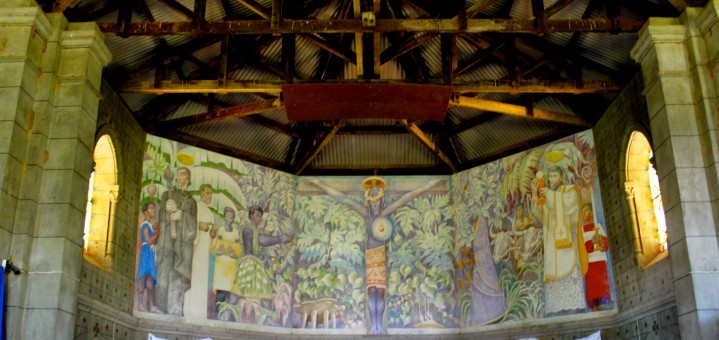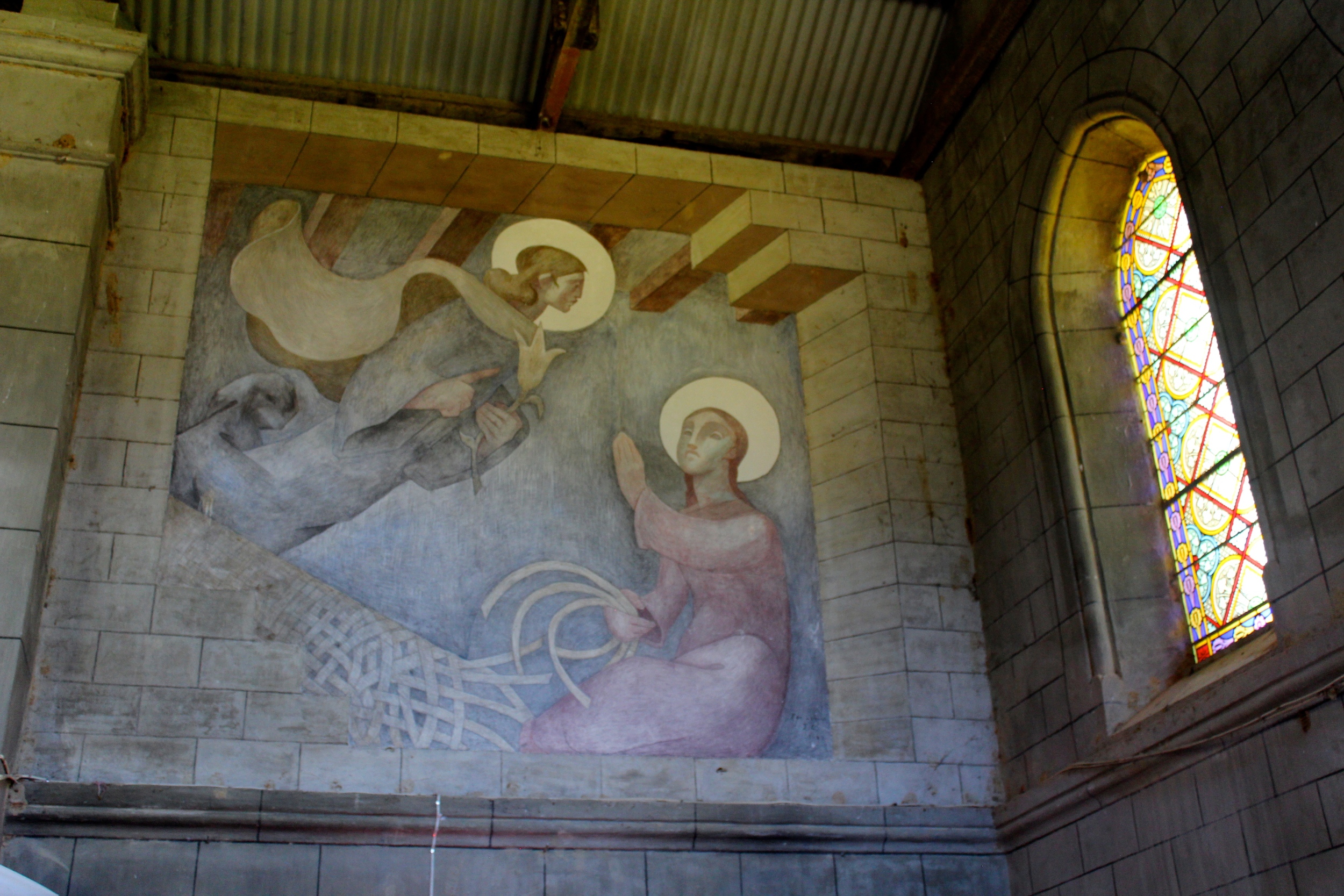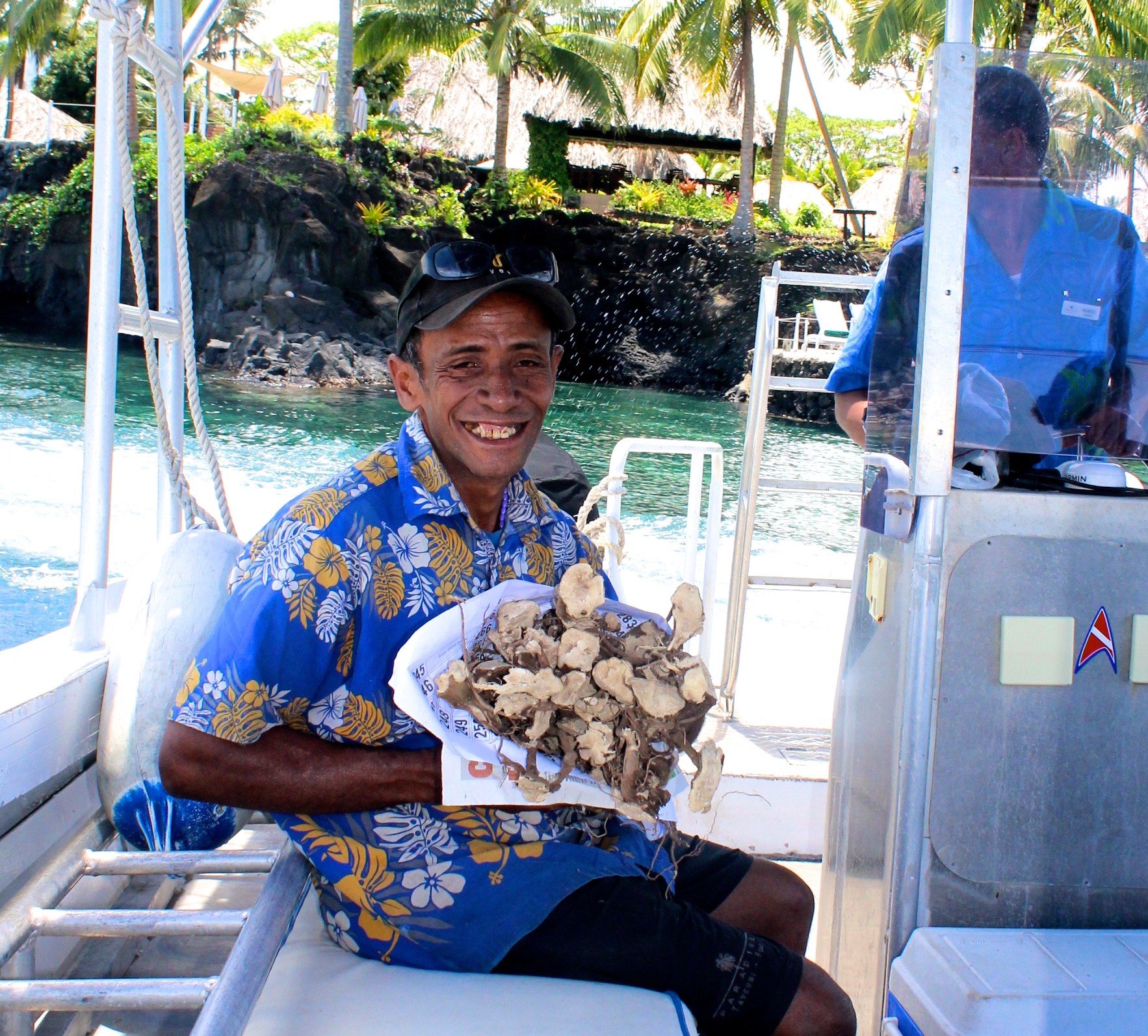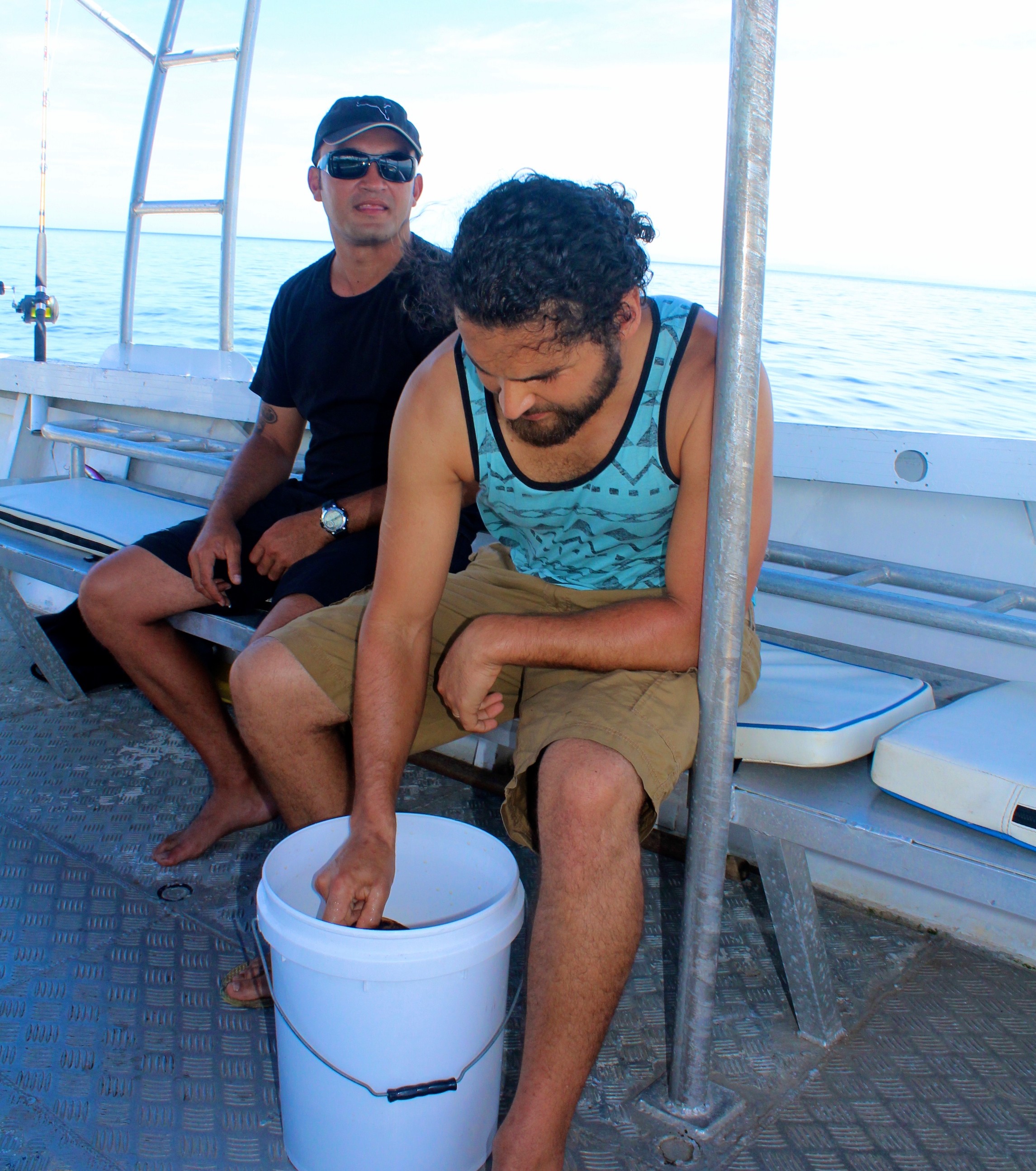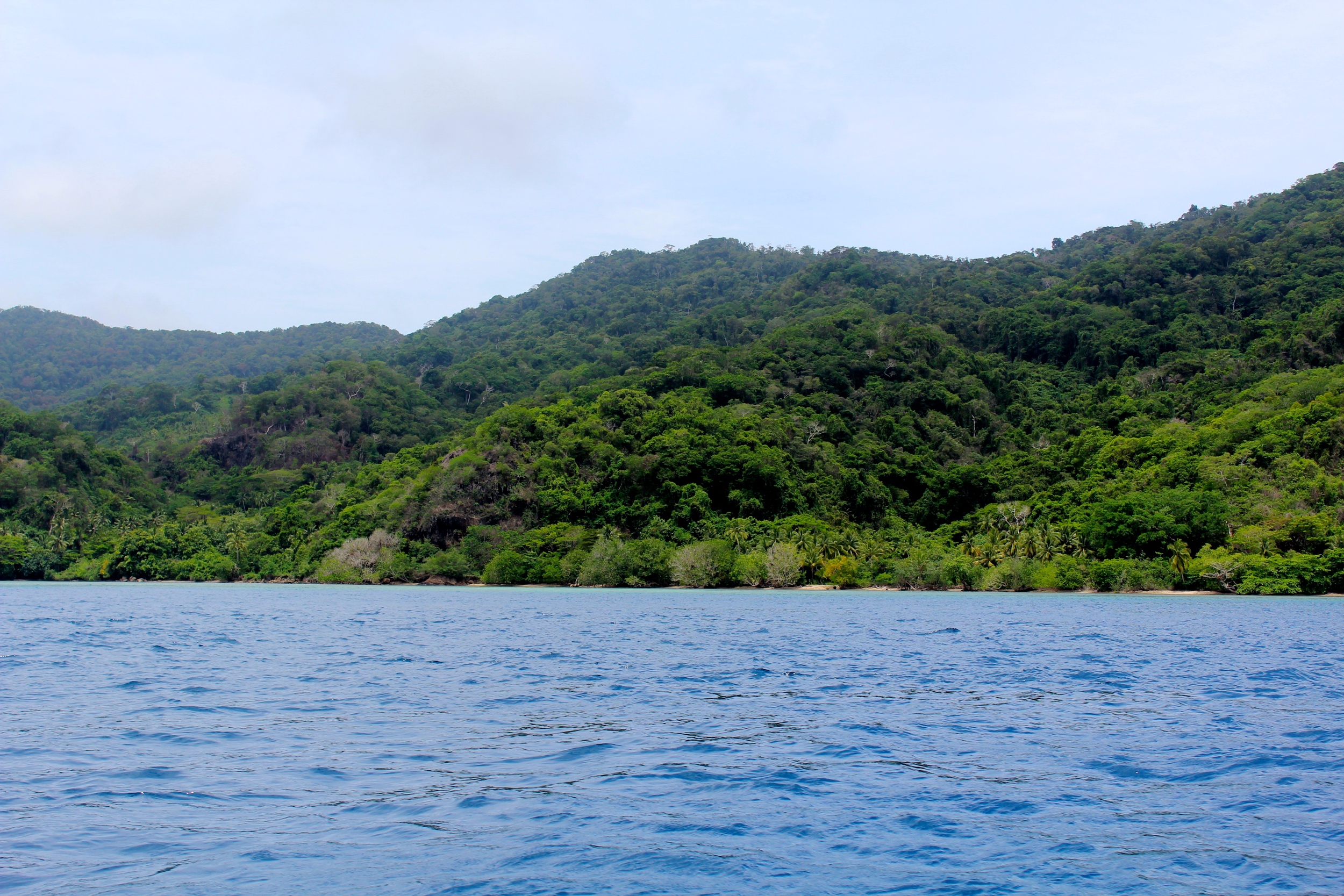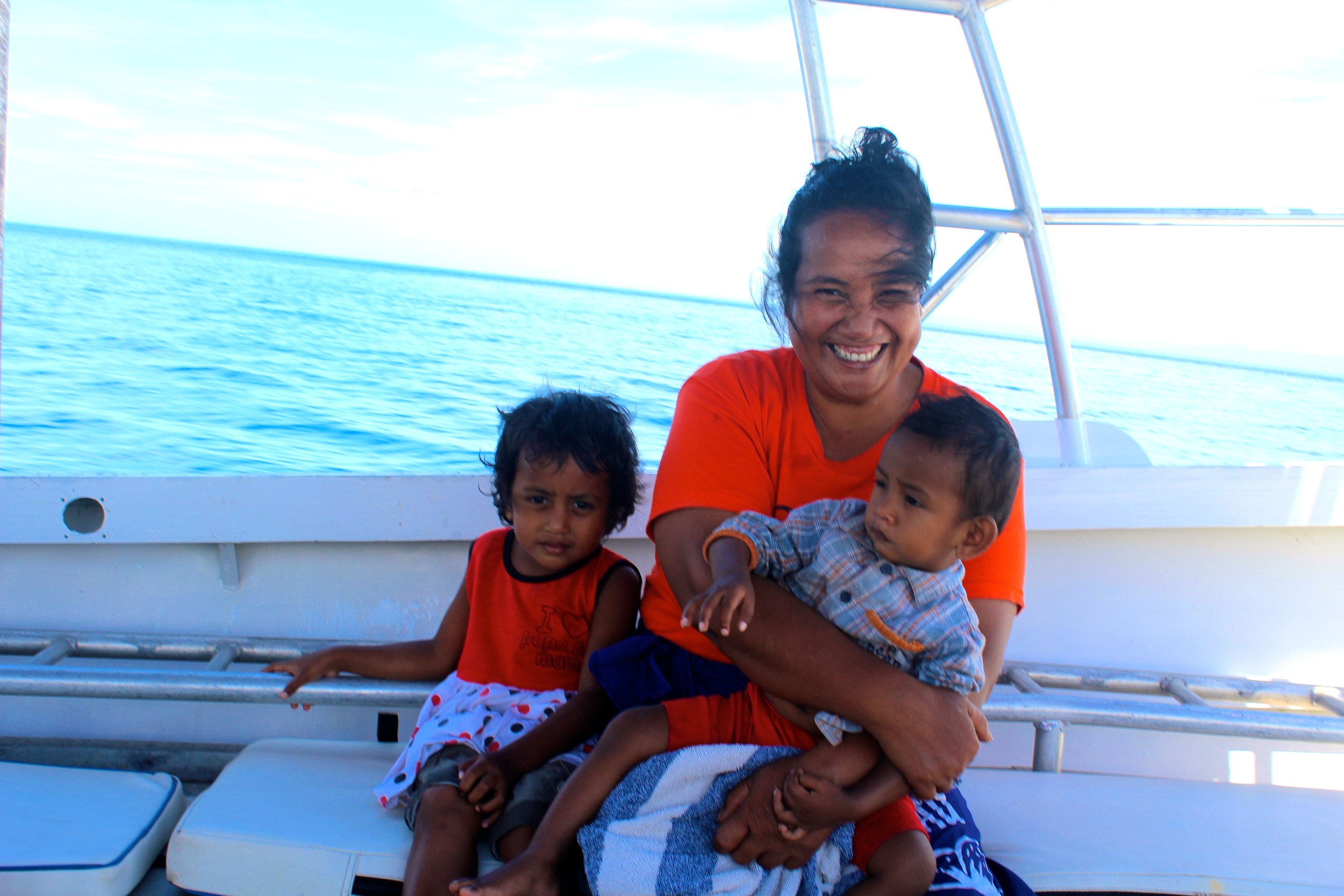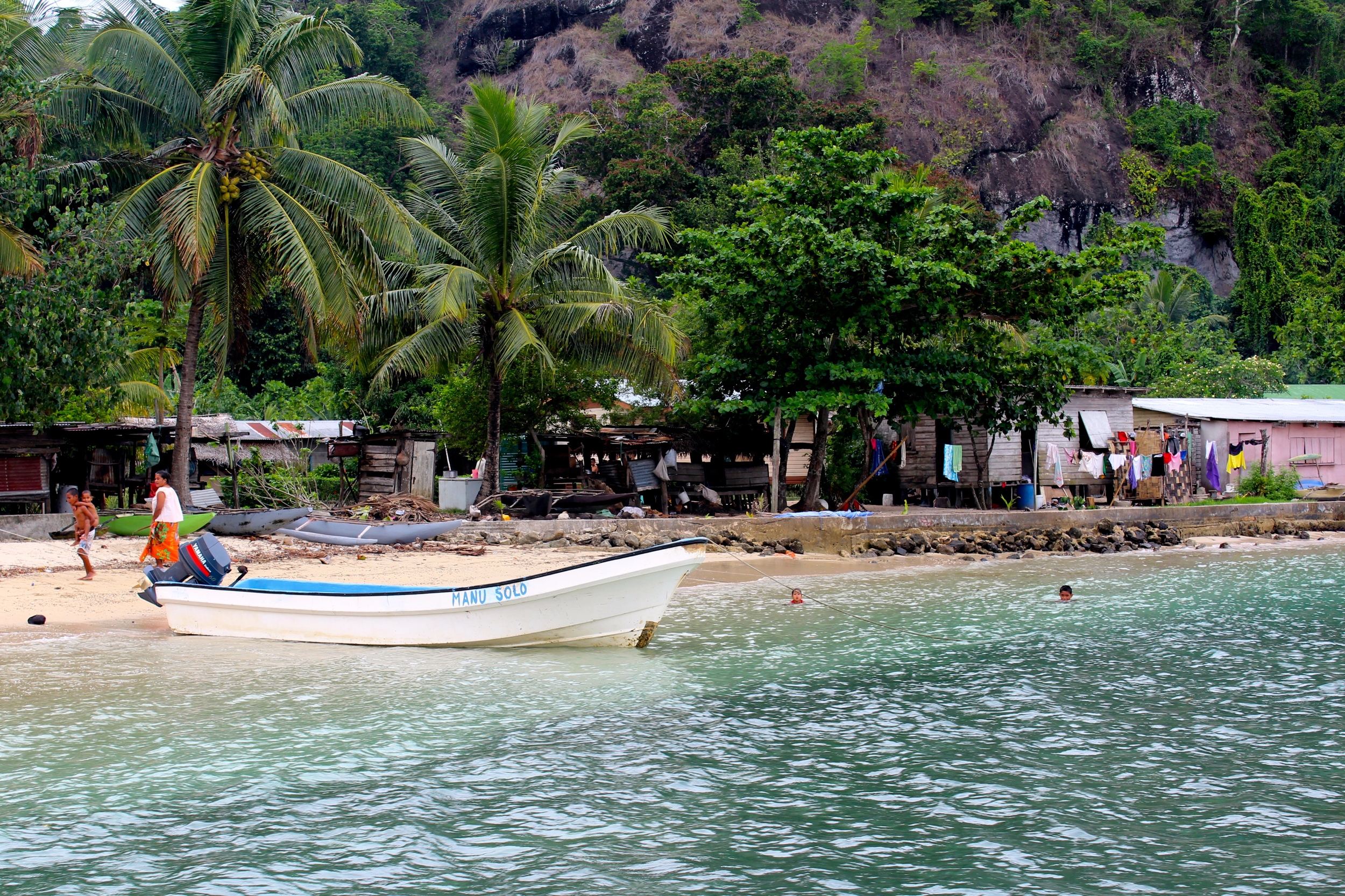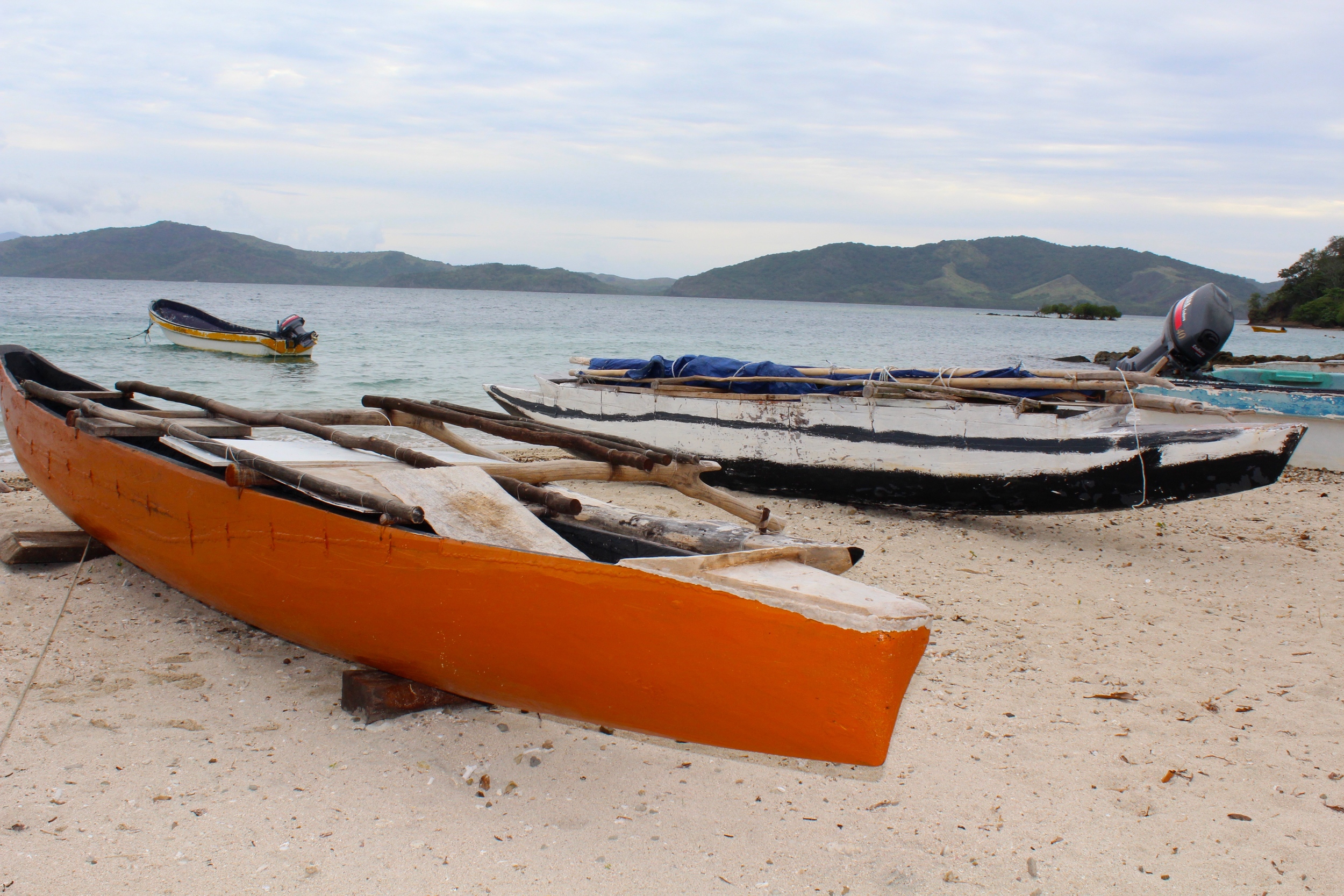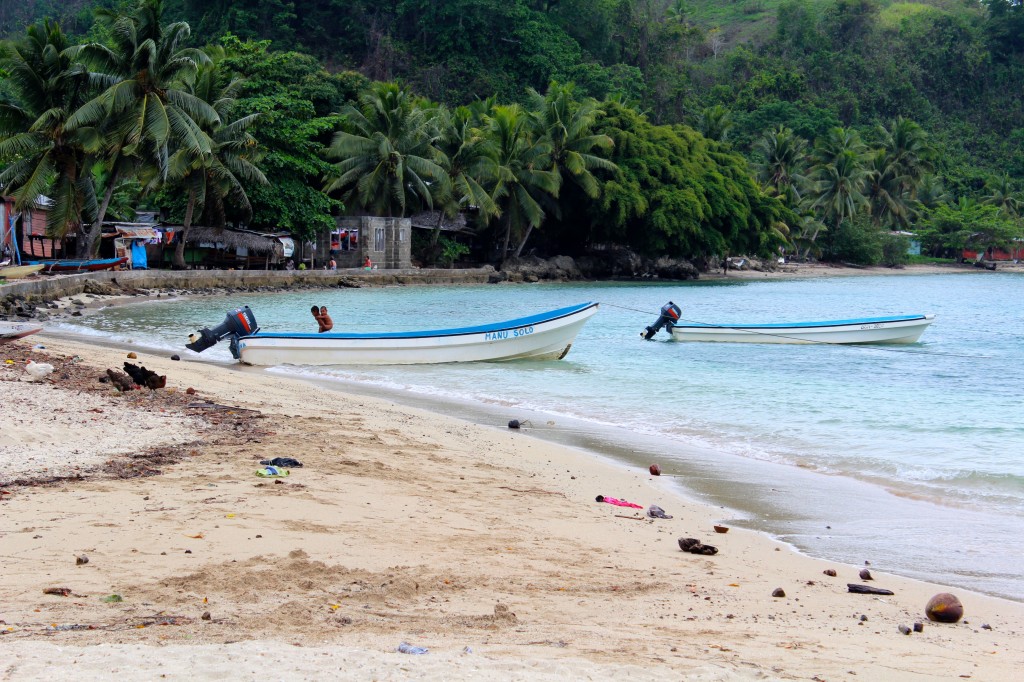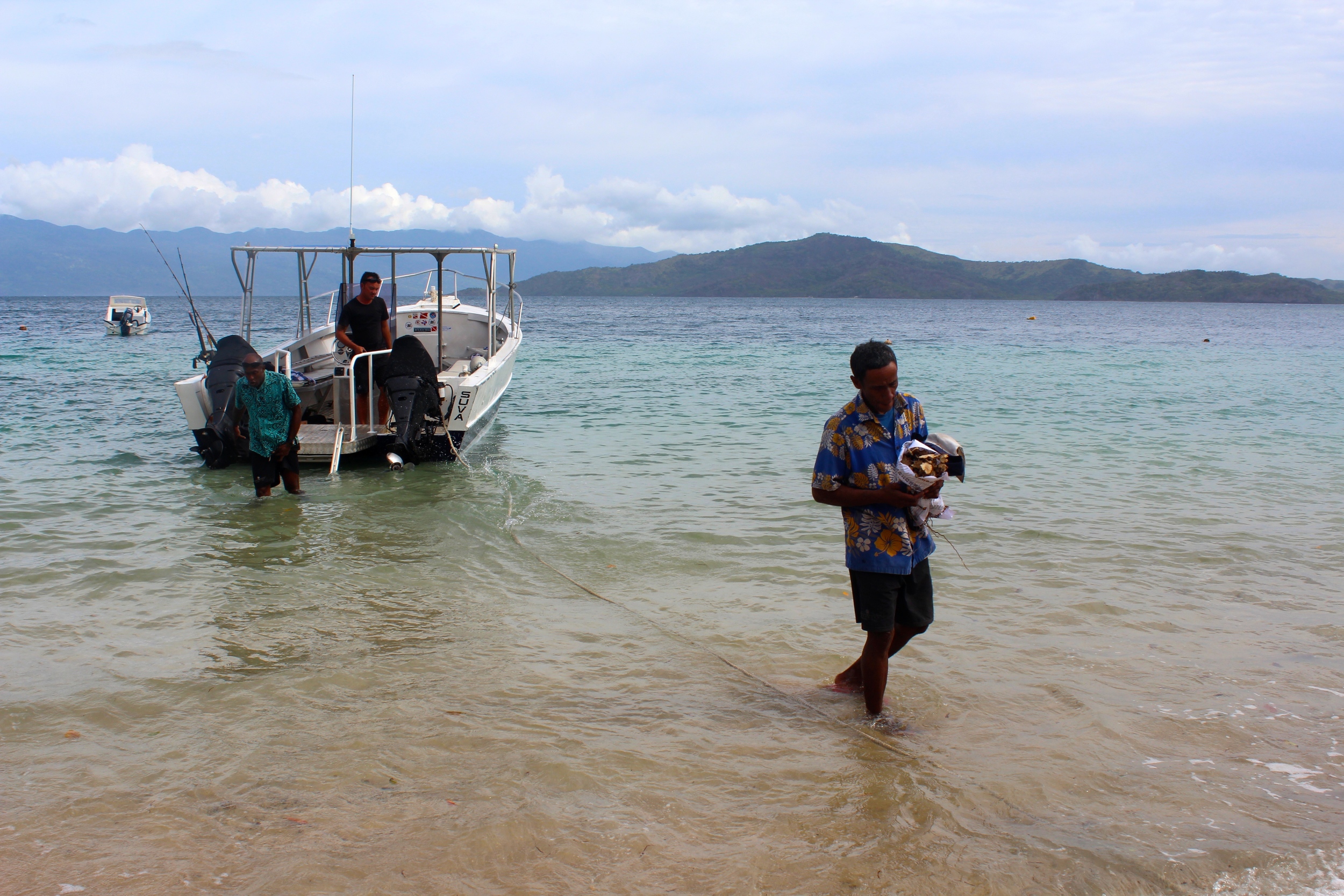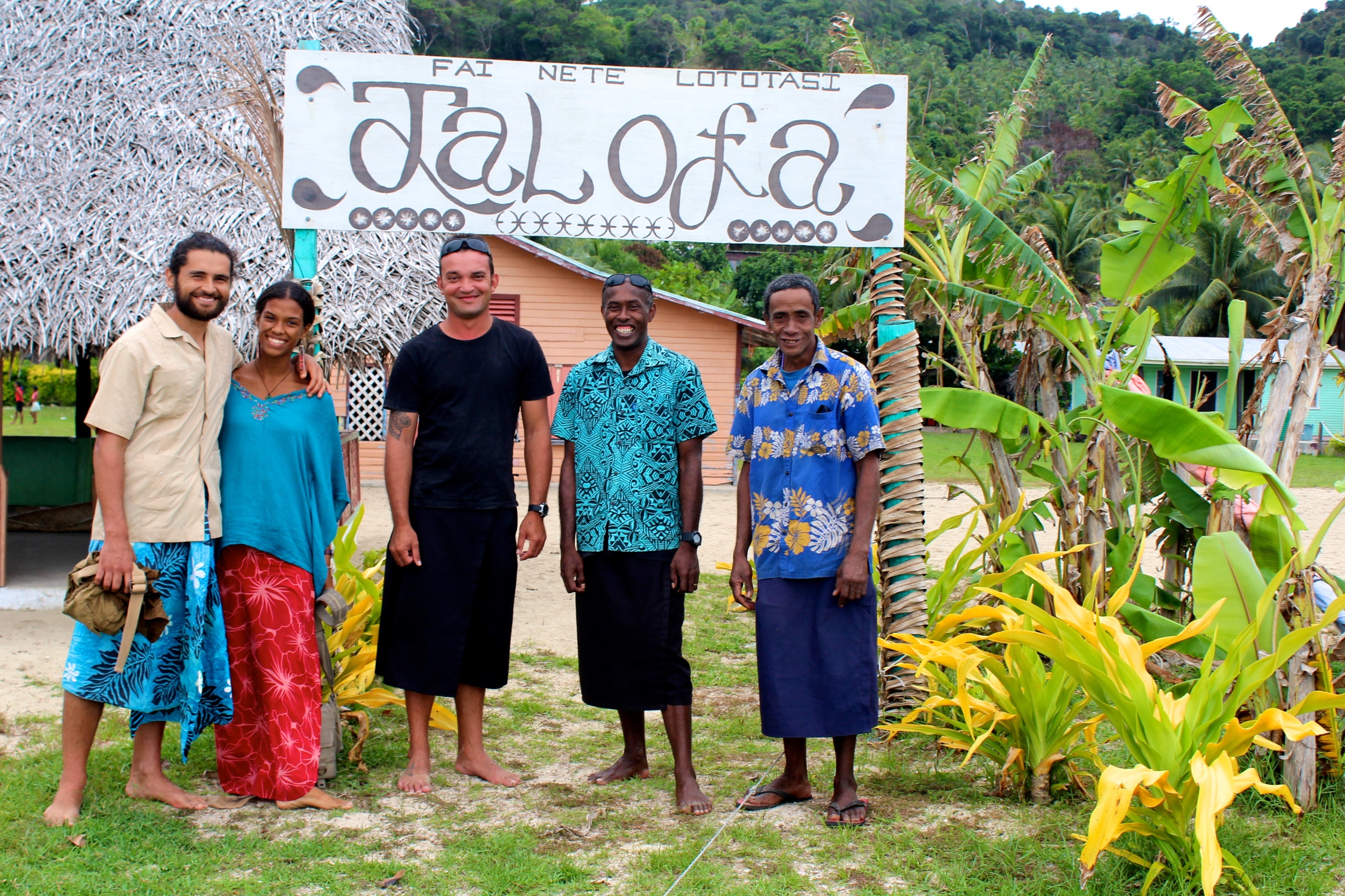When you picture beautiful frescoes in historic cathedrals your mind probably wanders to a European city, and not Fiji. However, we've been aiming to see Jean Charlot's mural of the Black Christ in the Ra District of Fiji for some time now. On our way back from Nadi last week, we made it happen! Along King's Road in Naiserelagi village in Ra, there is a sign for St. Francis Xavier's Catholic Mission. Following the sign towards an uphill 5-minute drive leads directly to the Church that is home to the beautiful artwork. We knew right away that this was the right church, based on the descriptions we'd heard. No other cars or people were around; just yaqona (kava) lying to dry in the sun out front.
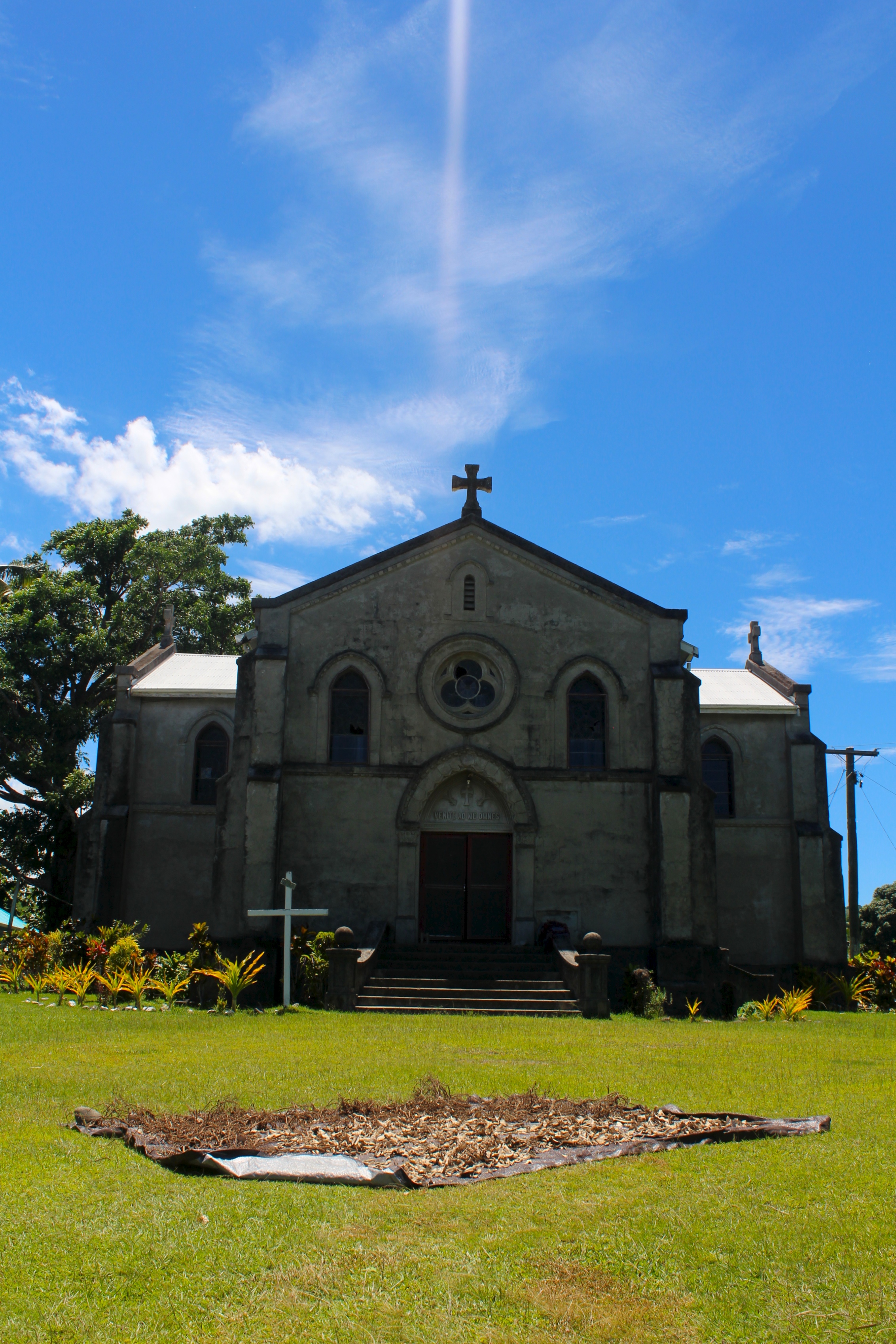
The cathedral was open, so we removed our shoes and let ourselves in to see the frescoes we'd been eagerly anticipating. The cathedral itself is built in the same manner as the Catholic church on Taveuni- a stairway entrance leading to high vaulted ceilings with stained glass windows and ibe (ih-mbay; Fijian woven mats) covering the floors.
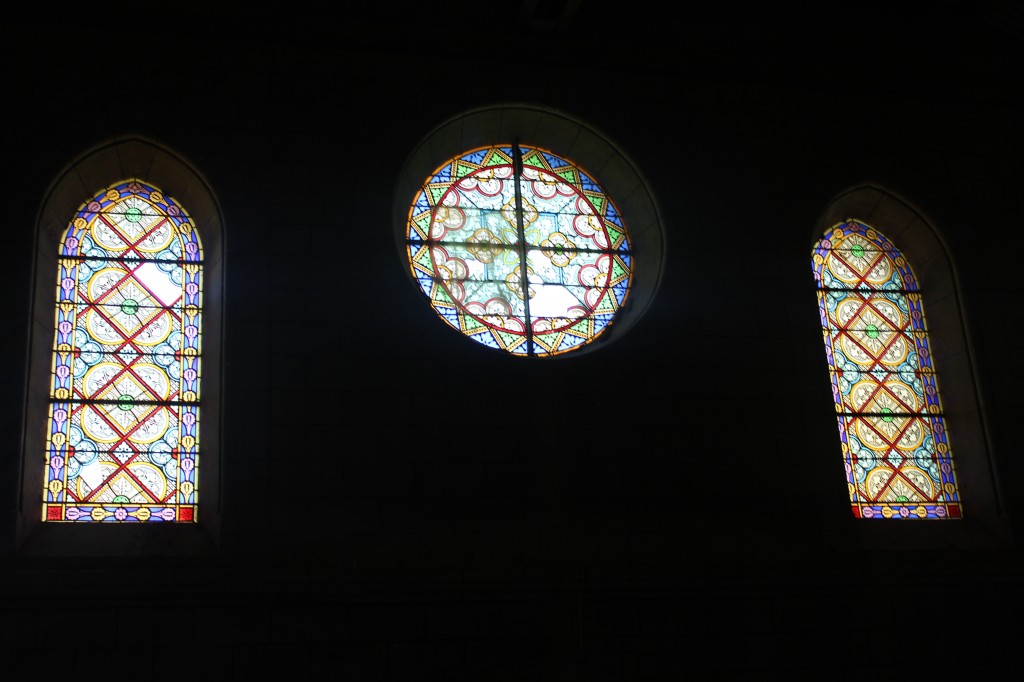
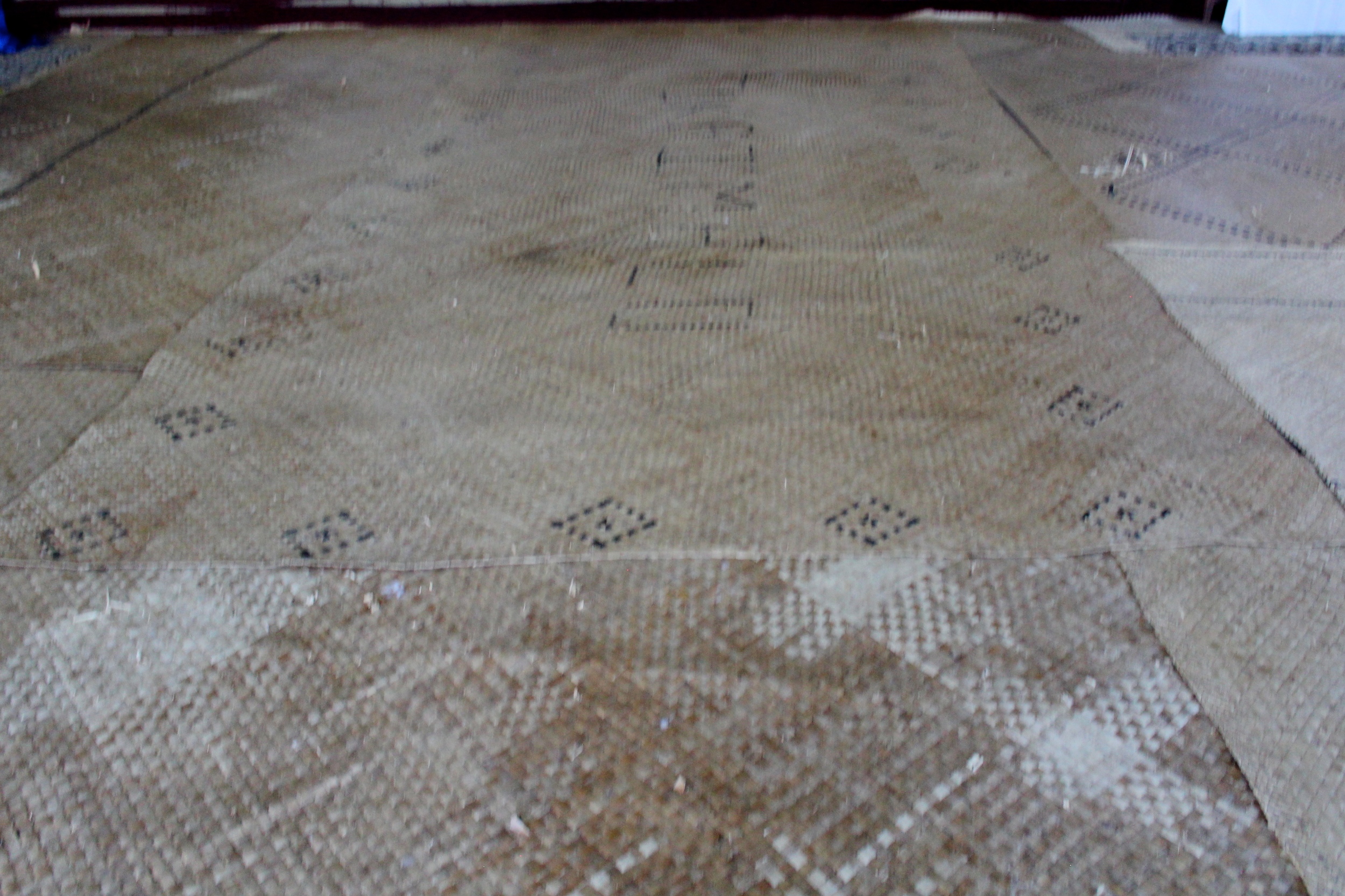
The set of Jean Charlot's three frescoes was everything we'd hoped for and more. The Black Christ and Worshippers mural is the center piece over, measuring ten feet by thirty feet; and to either side there are ten by twelve panels; one of St. Joseph's Workshop and the other of The Annunciation.
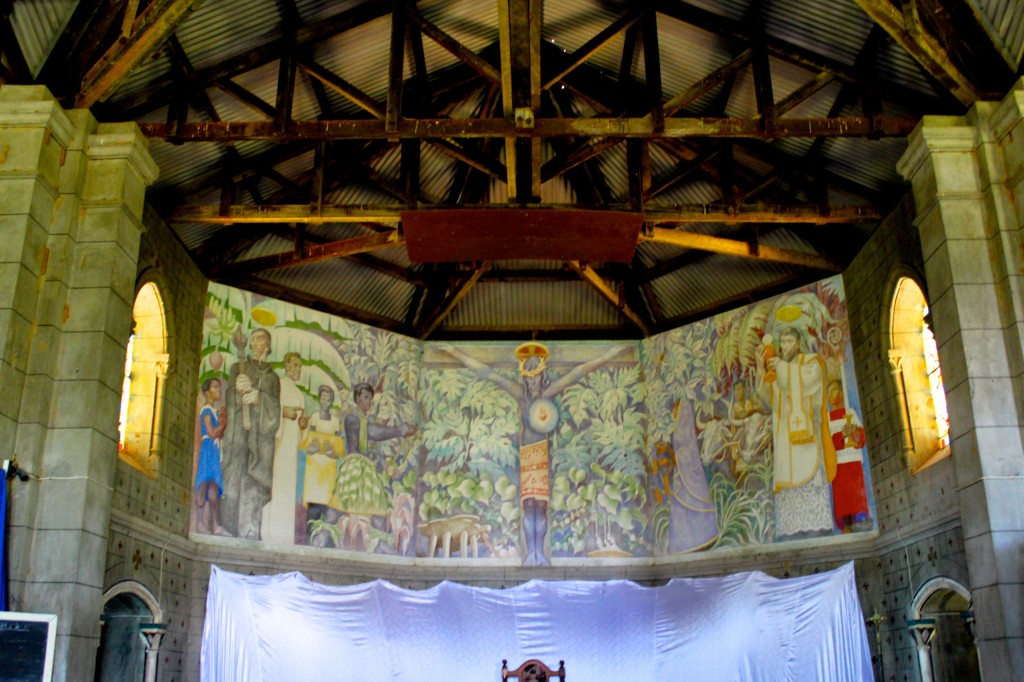
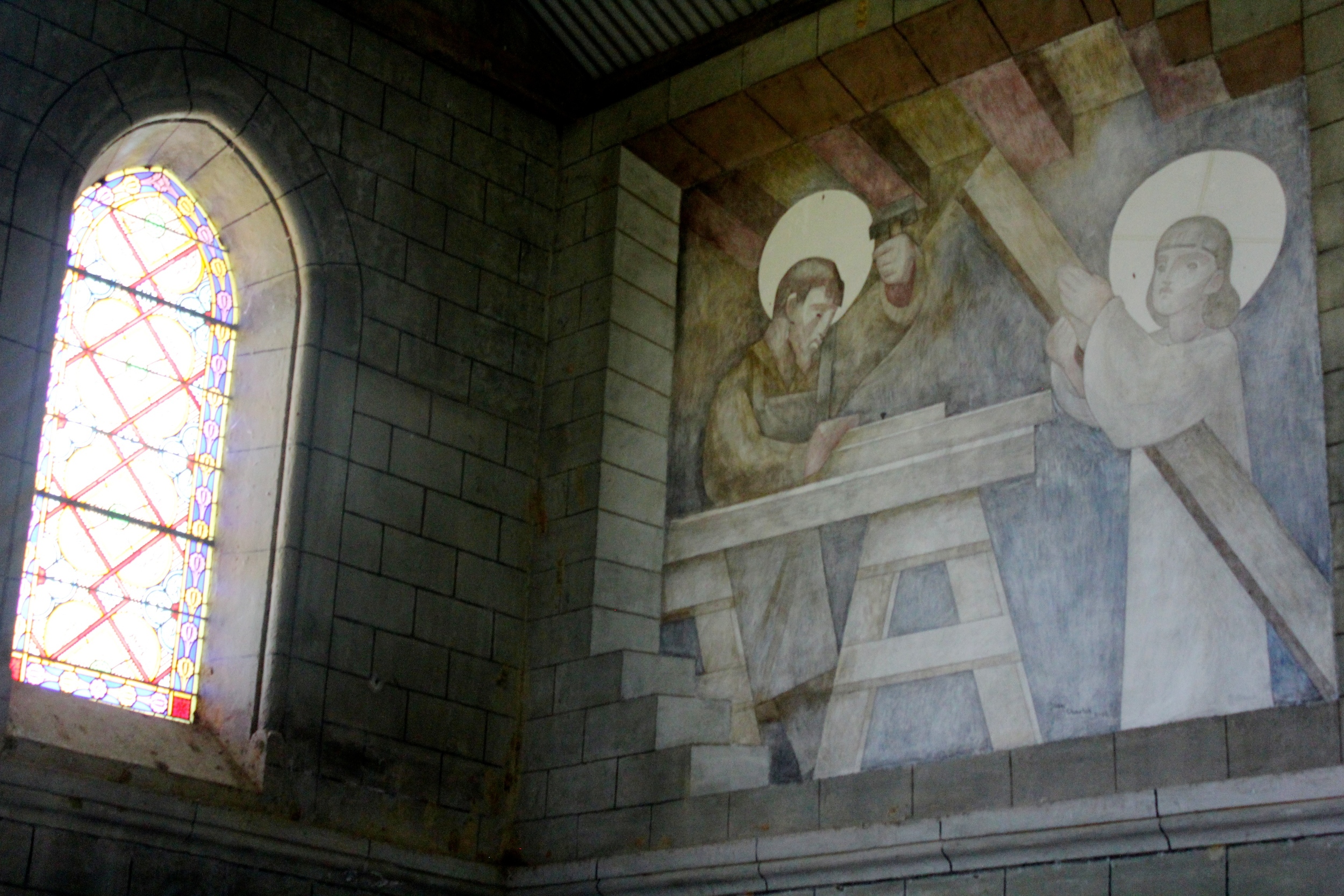
These pieces were painted in the early 1960s, and his style reminds us of the work of muralists Diego Rivera, Hale Woodruff and Thomas Hart Benton. We are so inspired by the multicultural aspects and empowering nature of the centerpiece; looking closely you will notice Fijian, and Fijian-Indian cultural traditions seamlessly integrated into the mural. Traditional offerings are being made on either side of the Christ figure.
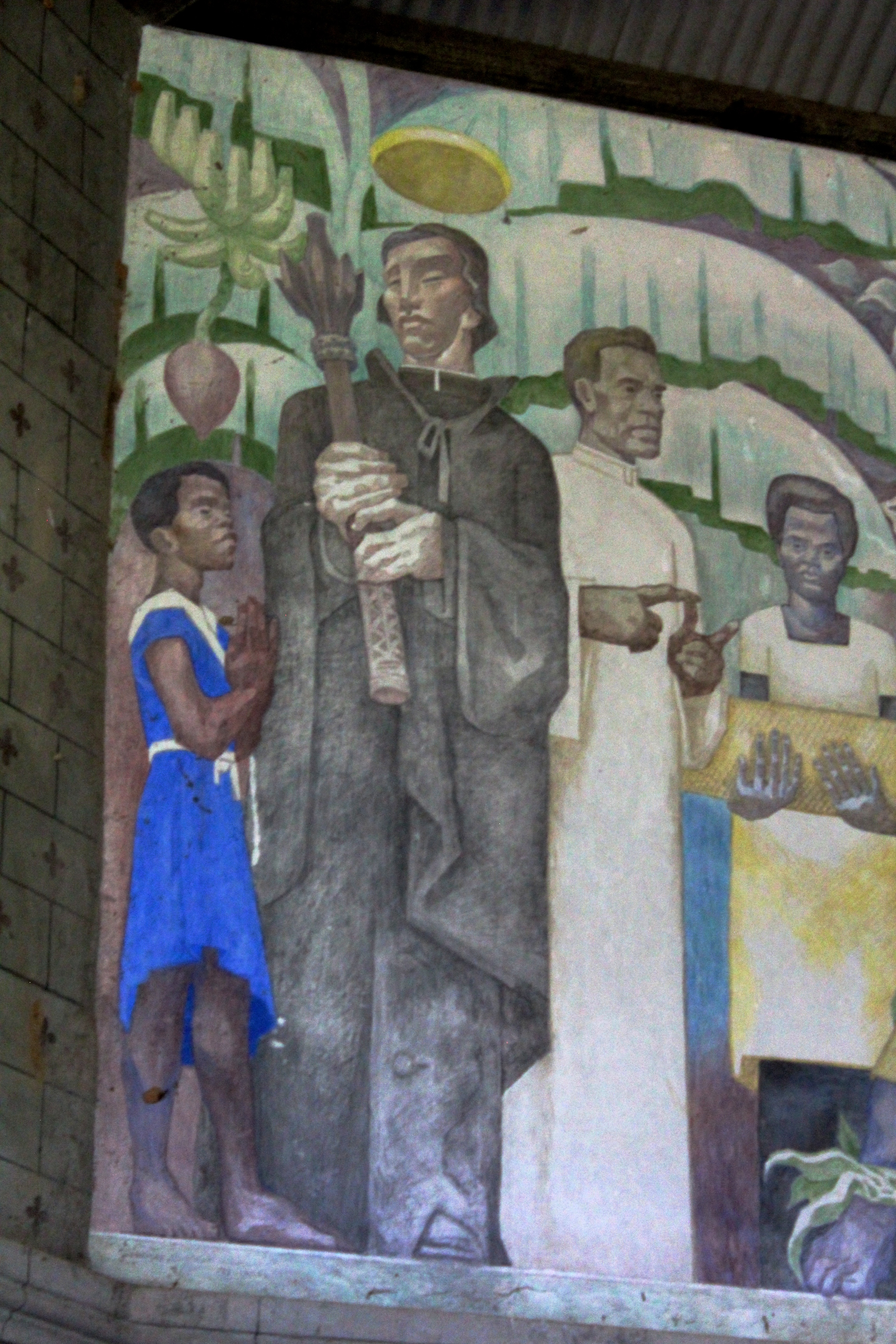
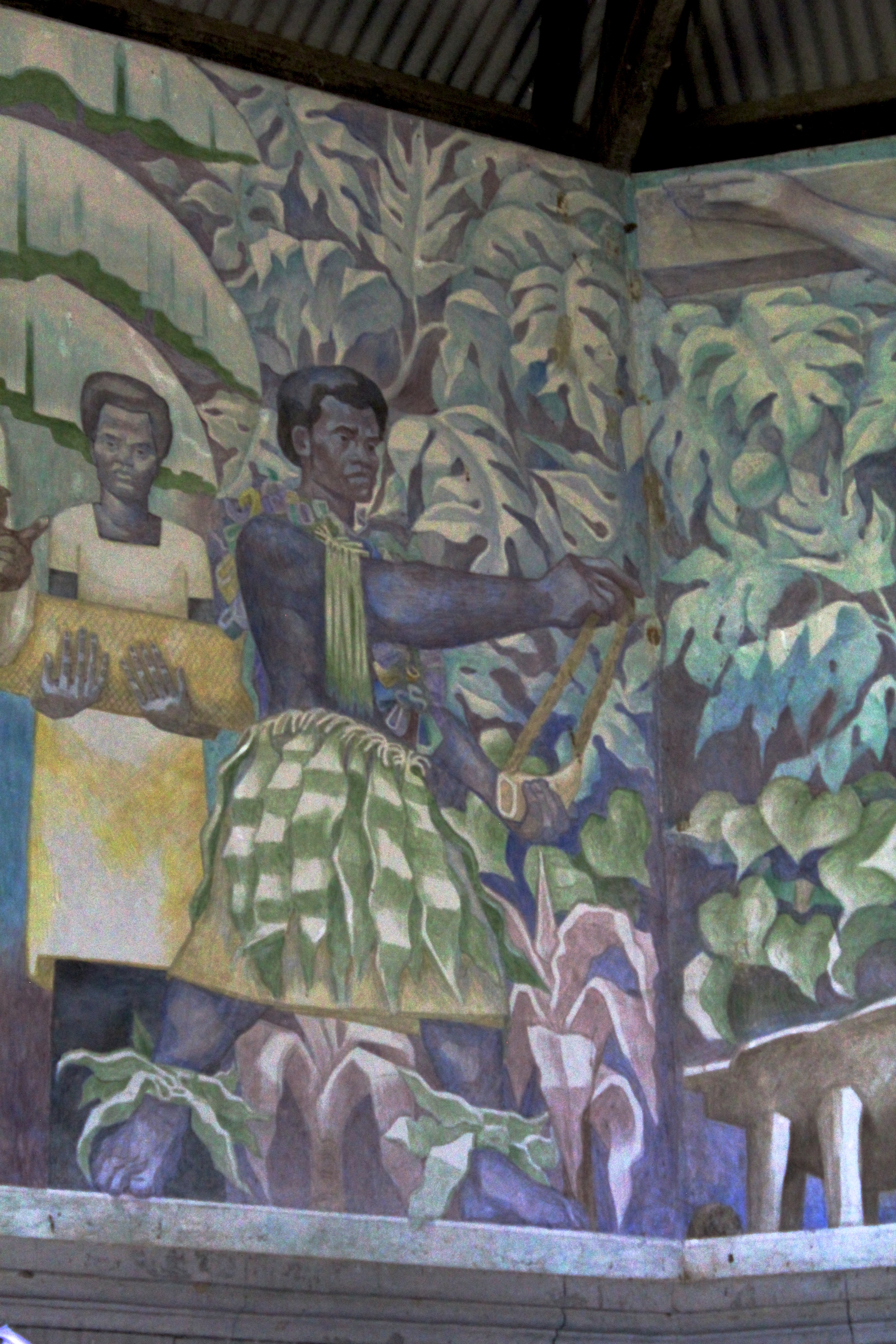
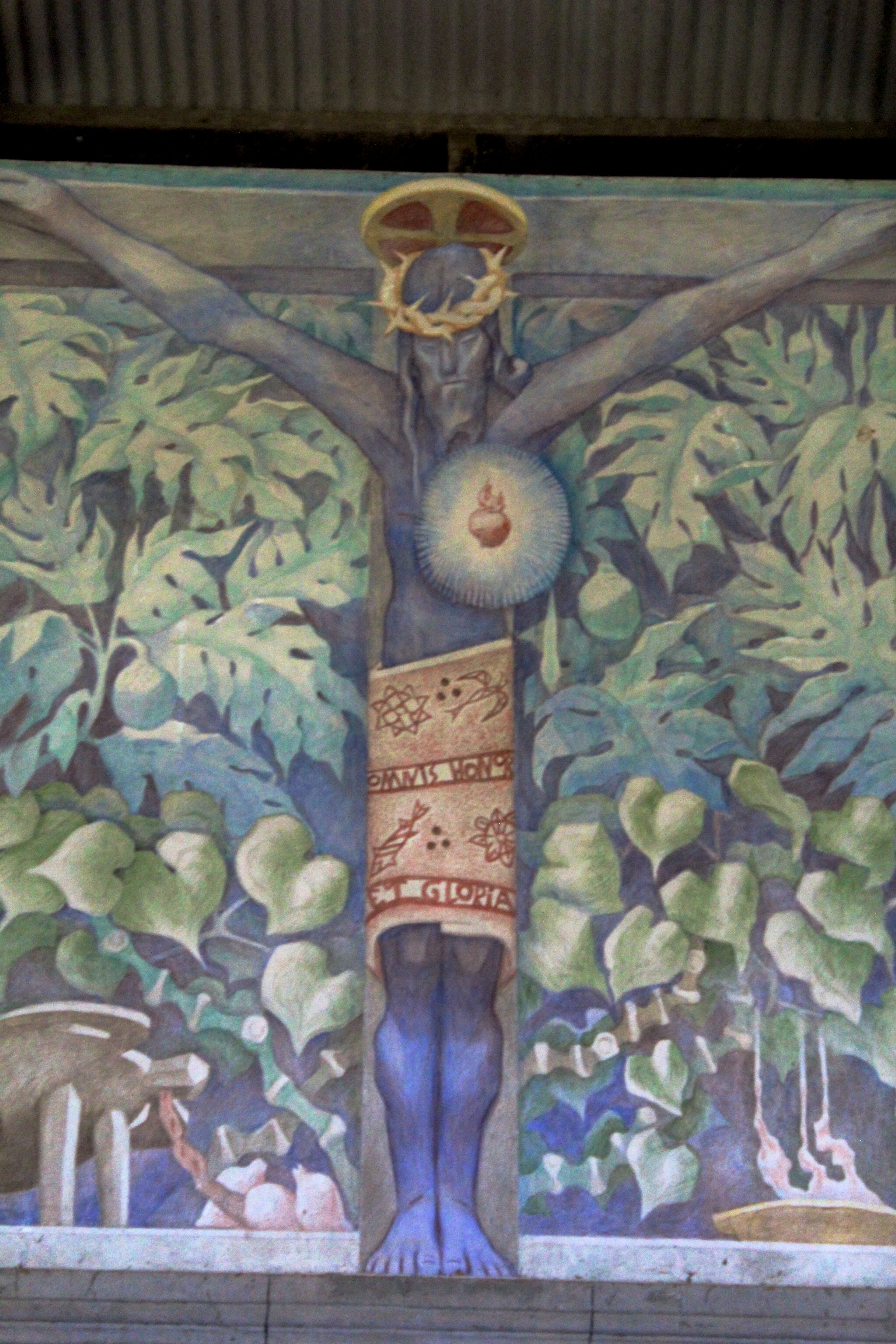
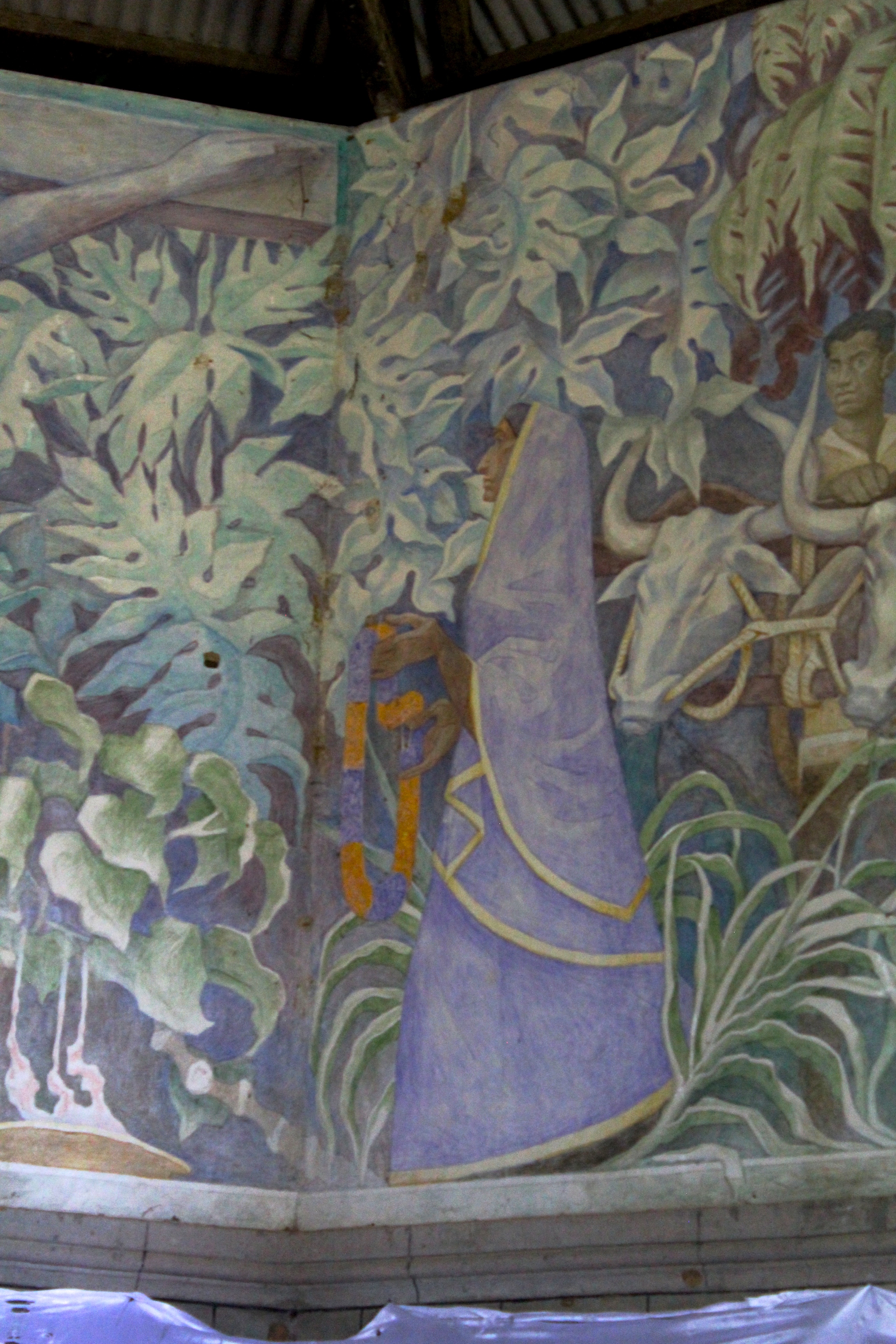
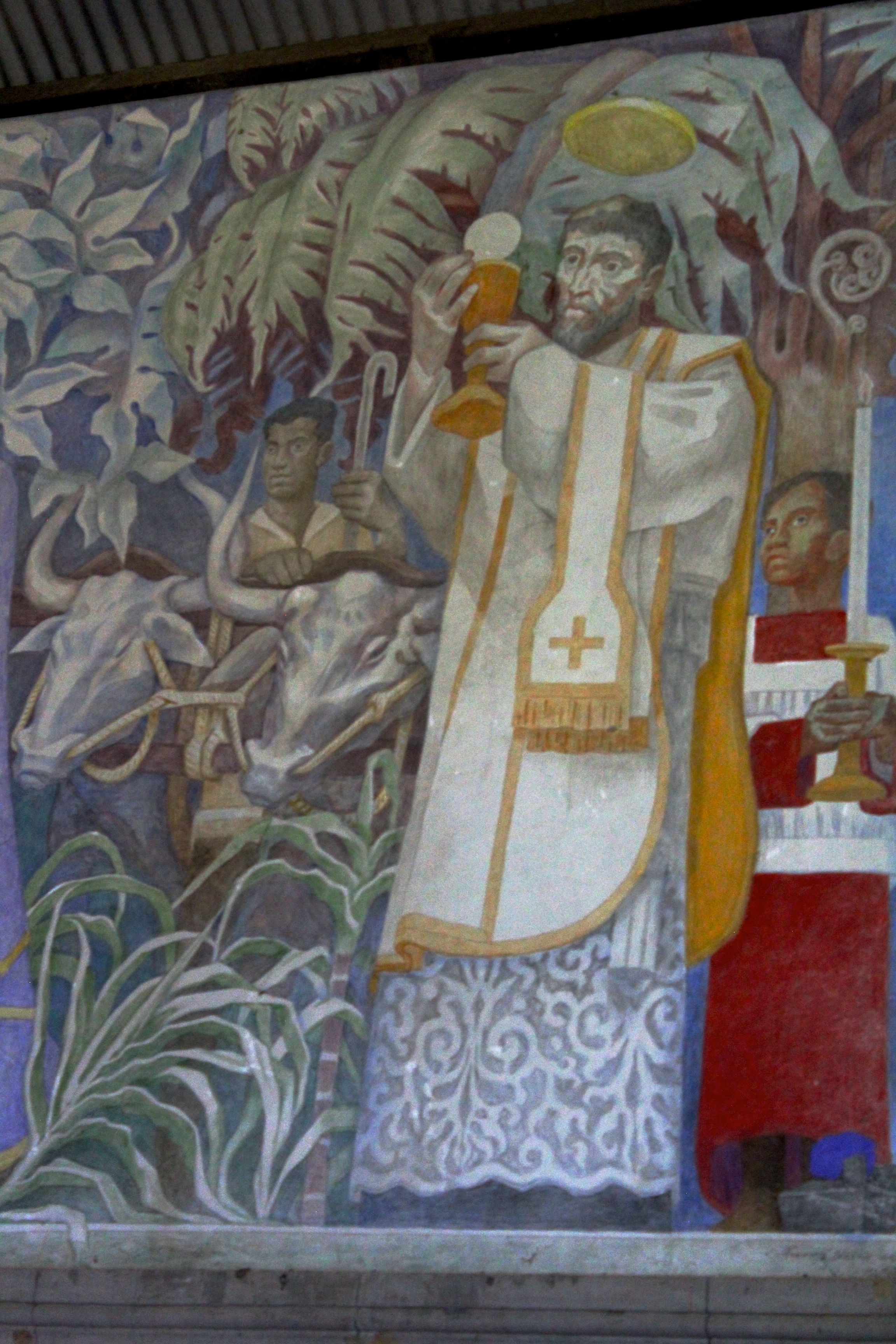
Jean Charlot has painted murals throughout Mexico and in Hawaii. As we head back to the States- we'll make a serious effort to view more of his work in the region.


